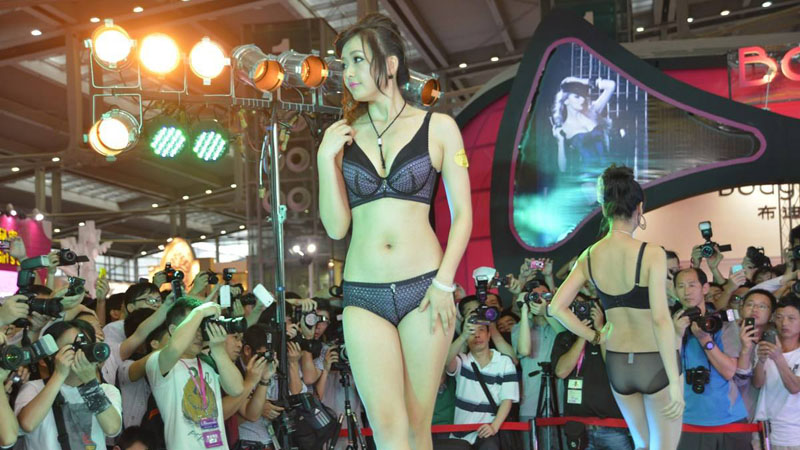The promotional battle in Beijing's summer clothing market has started early, with prices dropping instead of rising
2018/4/2

As May arrives, temperatures in the capital have soared for days. After over a month of sluggish sales, summer clothing has finally "come into its own," occupying prominent sales positions in major shopping malls. Due to an exceptionally short spring this year, the transition between spring and summer clothing has been indistinct, and prices have dropped instead of rising.
Temperature Determines Sales
"There is no spring in Beijing," customer Ms. Liu emphasized repeatedly. This year is particularly extreme—Ms. Liu worries that the spring clothes she bought after the Spring Festival have never been worn, and with summer arriving directly, there is no hope of wearing them now. Similarly worried are the clothing sales staff in malls. The cool spring in the capital has severely delayed women's clothing sales, which usually launch new products early. Many brands have adjusted accordingly, selecting styles suitable for seasonal transitions for spring supply, primarily using fabrics like chiffon.
As temperatures gradually rise in May, this situation has eased. A Beijing Business Daily reporter found through visits that women's clothing sales in most shopping malls in the capital were booming last weekend. In a Xidan mall, the summer clothing stock rate of various stores basically reached 90%, and sales staff at Etam were constantly arranging newly arrived summer clothes. A salesperson at Basic House believed that this was just the beginning of the peak season for summer clothing sales. According to data from a large shopping center, summer clothing sales during this year's "May Day" holiday increased by 5% compared with the same period last year.
Prices Drop Instead of Rising
Faced with huge inventory pressure from last year, clothing companies no longer have the confidence they once had when launching new products. A Beijing Business Daily reporter found through visits that clothing prices this year have not risen sharply; on the contrary, many brands have quietly cut prices. According to a salesperson at Five Plus, the price of this year's summer clothing has decreased by about 10%. In the past, the price range of clothing in the store was 800-1999 yuan, but now dresses priced at 500-600 yuan can also be found.
A salesperson at Ochirly attributed the price drop to changes in material costs: "For example, dresses used to be mostly made of mulberry silk, but this year there are more chiffon-like fabrics." Some sales staff also revealed the hidden reason: "If prices rise again, no one will really come to the mall to buy—everyone will shop online instead."
Compared with women's clothing, men's clothing prices are also on a downward trend. A salesperson at the Peacebird counter introduced that a three-piece men's outfit (jeans, shirt, and short-sleeve suit) cost nearly 2,000 yuan last year, but this year it can be purchased for about 1,500 yuan.
In fact, clothing prices have been declining since the beginning of the year. Unlike previous years, a Beijing Business Daily reporter noted that although there were no obvious promotional slogans for this year's spring clothing, low-key discounts were already in place. In Xidan Joy City, fast-fashion brands such as ZARA, H&M, and GAP previously launched activities such as "fixed-price spring clothing" and "additional discounts on sale items."
Pricing Is Closely Linked to Positioning
In the view of Fang Xiaobo, Secretary to the Chairman of Baoxiniao Garment Co., Ltd., clothing companies this year generally adopt two strategies: maintaining or lowering prices. Based on Baoxiniao's previous performance and sales, Fang Xiaobo stated that Baoxiniao has adopted a price-maintenance strategy this year. "This year, Baoxiniao has formulated a brand upgrading plan. The company will focus on internal improvements, ensuring clothing quality while enhancing the consumer experience and expanding brand awareness and influence."
According to Fang Xiaobo, clothing pricing is mainly determined by brand positioning. If clothing prices continue to rise beyond the affordability of the target group, some customers will inevitably be lost. "Last year, clothing sales were sluggish, and some companies had high inventory levels. This year, clothing companies are lowering or maintaining prices to boost sales."
"When sales decline, companies will first adopt price strategies to win back consumers. However, the price adjustment range of clothing companies will not deviate from the target group," said independent clothing commentator Ma Gang. He pointed out that clothing pricing is influenced by many factors but is mainly affected by brand positioning. Once clothing prices drop or rise too much, the audience will gradually narrow, and sales will decline.
Related News

